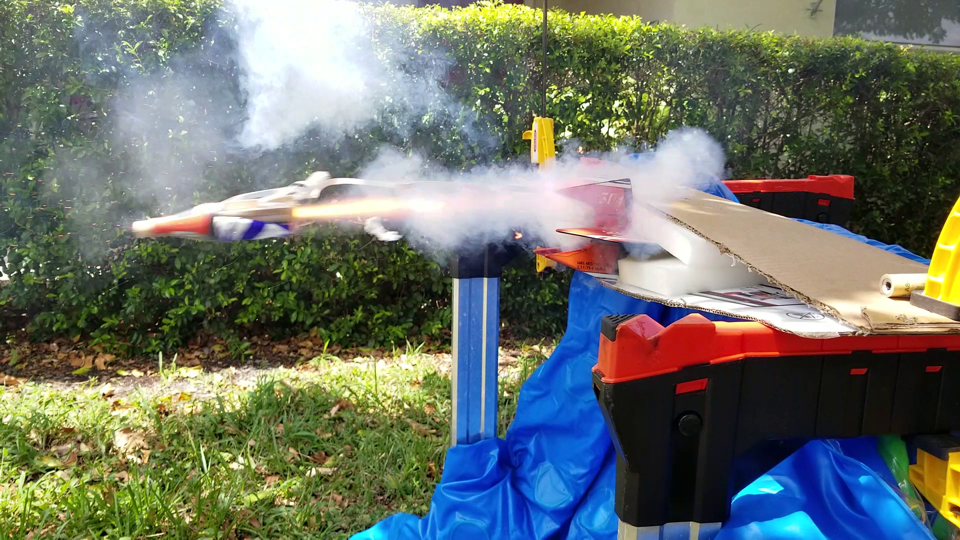Brainlord Mesomorph
Well-Known Member
- Joined
- Apr 2, 2018
- Messages
- 266
- Reaction score
- 26
In the concept stage of my next sci fi oddrock.
And I wondered if anyone had any experience with some strange ideas I've had:
1. Hollow point nosecone?
I'd like the front of it to look like a cannon. I was thinking of 3d printing a shape almost exactly like a hollow point bullet. I could also try a 13mm tube, a 19mm tube a couple centering rings and hiding a 13mm nosecone inside it.
Once it flight wouldn't that pocket just fill with air, and then the other air would just flow around it? How much drag are we talking about? (if that won't work I guess a lens shape would do)
2. Redirecting an ejection charge?
If ejection baffles work, I should be able to send an EC around a couple of corners, right?
The idea is rear ejection without blowing out the engine mount. Imagine three tubes. A center tube and two smaller side tubes, glued along their length, but also connected at the top. I'm not sure if there is a cross-tube between them or some 3d printed or balsa construction, but they are interconnected and sealed for pressure at the top.
Now you put two small parachutes and tailcones on the side tubes. When the EC goes off (it splits in half and goes around two corners?) and blows out both chutes out the back like twin drogues. Hmm? Workable?
Or you could do it the other way, put two engines in the side tubes, and one bug chute and tailcone in the middle.
Anyone do (or try) anything like this?
And I wondered if anyone had any experience with some strange ideas I've had:
1. Hollow point nosecone?
I'd like the front of it to look like a cannon. I was thinking of 3d printing a shape almost exactly like a hollow point bullet. I could also try a 13mm tube, a 19mm tube a couple centering rings and hiding a 13mm nosecone inside it.
Once it flight wouldn't that pocket just fill with air, and then the other air would just flow around it? How much drag are we talking about? (if that won't work I guess a lens shape would do)
2. Redirecting an ejection charge?
If ejection baffles work, I should be able to send an EC around a couple of corners, right?
The idea is rear ejection without blowing out the engine mount. Imagine three tubes. A center tube and two smaller side tubes, glued along their length, but also connected at the top. I'm not sure if there is a cross-tube between them or some 3d printed or balsa construction, but they are interconnected and sealed for pressure at the top.
Now you put two small parachutes and tailcones on the side tubes. When the EC goes off (it splits in half and goes around two corners?) and blows out both chutes out the back like twin drogues. Hmm? Workable?
Or you could do it the other way, put two engines in the side tubes, and one bug chute and tailcone in the middle.
Anyone do (or try) anything like this?









